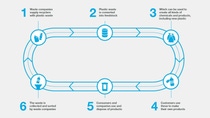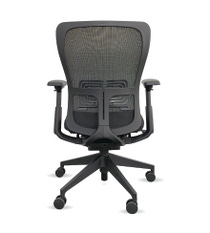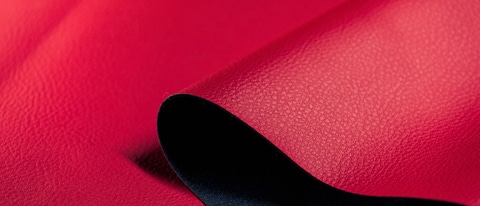Performance Polymers
How Sustainability drives Innovative Furniture Design
The world is changing, and the furniture industry along with it. With an accelerating population and increasing strain on natural resources, the United Nations predicts that if the global population reaches its projected 9.6 billion by 2050, the equivalent of three planets would be needed to provide enough natural resources to sustain current lifestyles. Environmentally conscious furniture designers and manufacturers have responded by shifting towards more sustainable practices. A great example of this is the e3 Furniture Sustainability Standard. Established in 2008 by the Business + Institutional Furniture Manufacturers Association (BIFMA), it promotes sustainability as a priority for its members.
To some, initiatives such as these may be viewed with skepticism or even trepidation. After all, doesn’t sustainability mean additional restrictions on materials and processes? How is creativity supposed to flourish if it’s crammed into a box?

While these concerns are understandable, they’re not necessarily accurate. At BASF, we’ve seen firsthand how sustainability fuels innovation in the furniture industry, rather than confine it. For example, in recent years, we’ve expanded our portfolio to include innovative materials that support sustainable goals — while still giving furniture designers creative inspirations. For instance, BASF’s Petra® thermoplastic polyester is an injection molding resin based on 100 percent post-consumer and post-industrial polyethylene terephthalate (PET). According to a 2018 report from the Association of Plastic Recyclers (APR), recycled PET reduces greenhouse emissions by 67 per cent and total energy consumption by 79 per cent. BASF also teamed up with Coca Cola and Emeco to create an upcycled chair from a special mix. Consisting of recycled PET, our mix combined plastic sourced from 111 recycled plastic bottles with color pigment and fiberglass for strength. Based on Emeco’s iconic 1106 Navy Chair, the aptly named 111 Navy Chair™ took four years to develop. Since its release in 2010, more than 15 million bottles had been saved from landfill.
Another BASF product developed with sustainable targets in mind is Haptex 2.0, an innovative synthetic leather created from polyurethane — with zero organic solvent. Eliminating the use of solvents enables production lines to bypass the wet-process step and increase efficiency. Further, it reduces energy use by at least 50 per cent. The first synthetic leather solution of its kind, Haptex is also non-toxic and adheres to stringent VOC standards. Combining soft-touch and high peeling strength, Haptex affords furniture makers a sustainable option to other synthetic leathers like PVC and Solvent PUs, without compromising on quality or durability.
These products are proof that sustainable solutions can be found, but are they worth the effort? Yes. Aside from our shared responsibility to mitigate the environmental impact of furniture production, we’ve witnessed the positive impact of sustainable practices on both a global scale and across the industry, from manufacturers down to the individual consumer brands. Firstly, in considering the environmental repercussions of their processes, companies can impart real change. Responsible sourcing, for example, helps reduce deforestation, while opting for recyclable materials cuts down on waste.
Reduce, reuse…repurpose?
In 2018, BASF first used pyrolysis oil derived from plastic waste as feedstock in our own production. This thermochemical recycling process — also known as Chemcycling® — enables plastic waste to be repurposed, rather than discarded. This not only helps reduce the amount of plastic waste destined for landfill or incineration but provides an indistinguishable alternative to fossil feedstock. BASF is also the first chemical company with transparent emission data for their entire portfolio of approximately 45,000 products. This Product Carbon Footprint comprises all product-related greenhouse gas emissions that occur until the BASF product leaves the factory gate for the customer: from the purchased raw material to the use of energy in production processes.


Leading furniture designer Haworth used BASF’s proprietary simulation tool UltraSim to optimize material usage for their enhanced Zody desk chair.
There’s another reason for the furniture industry to go green: its consumers. According to a 2018 survey conducted by the SFC (Sustainable Furnishing Council), 76 percent of consumer respondents would pay more for home furnishings that were certified to be environmentally safe. Further, Unilever’s 2017 international study concluded one third of consumers prefer to buy from sustainable brands. Companies who are transparent about their environmental impact help inform purchasing decisions from eco-conscious consumers.
It doesn’t have to be difficult. Brands wishing to incorporate sustainable practices can benefit from extensive support provided by BASF throughout different stages of the supply chain. For instance, BASF recently worked with leading furniture designer Haworth on an enhanced edition of its signature Zody desk chair. BASF’s proprietary simulation tool ULTRASIM® allowed Haworth to optimize material usage and improve operational efficiencies and aesthetic qualities of its final product.
The possibilities are endless, especially if stakeholders have a shared commitment to sustainability— and are willing to think outside the box. With a little creativity, even the most pressing environmental challenges can be addressed by individual brands, as well as the furniture industry as a whole.
